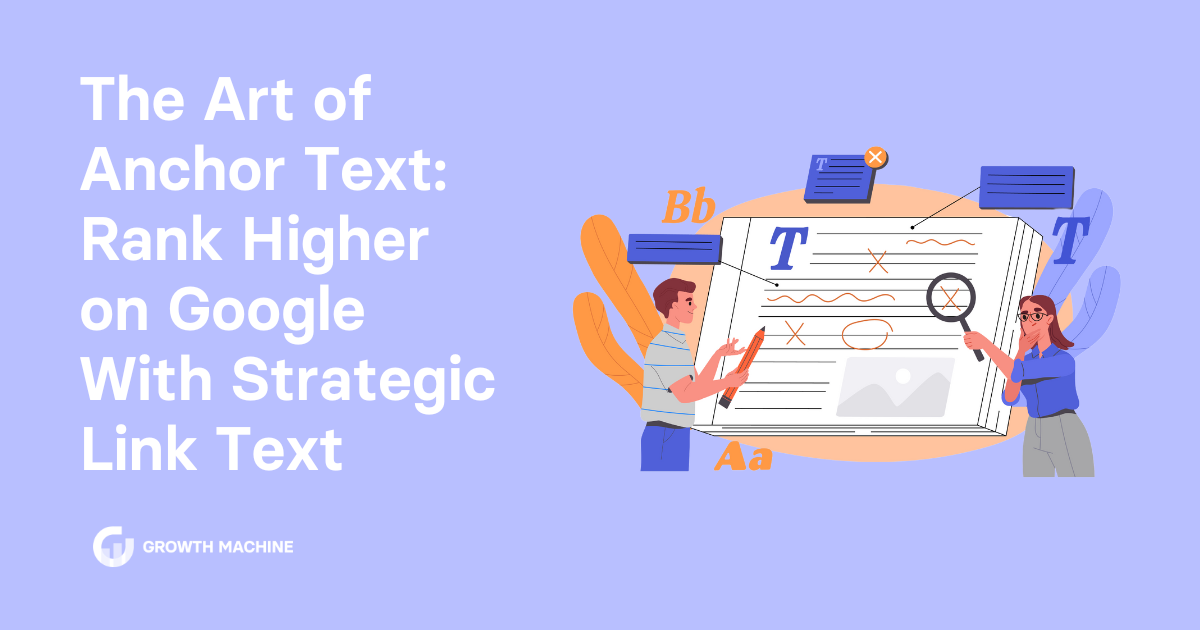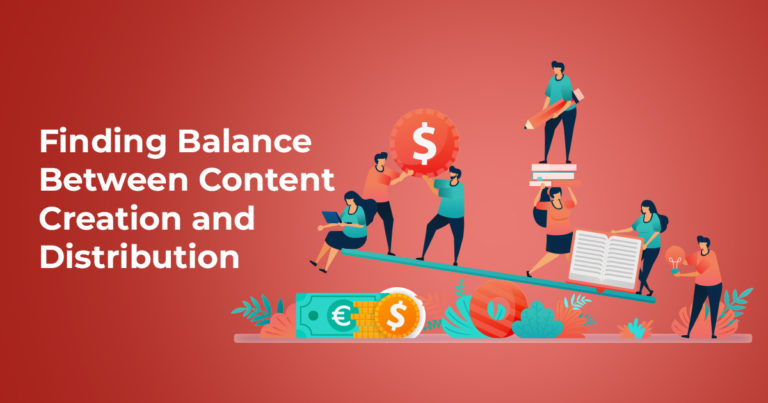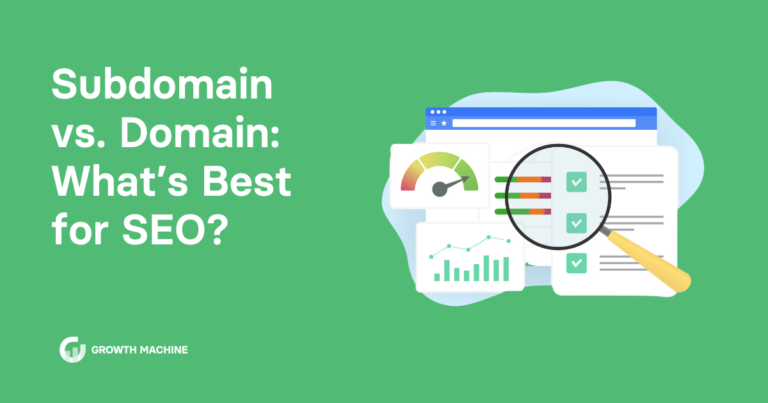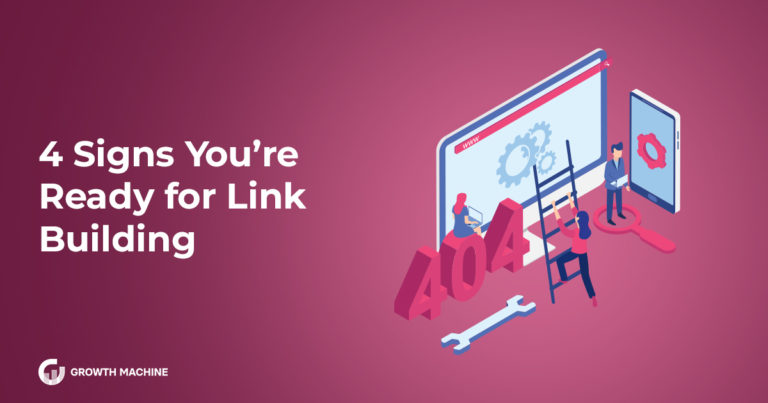The Art of Anchor Text: Rank Higher on Google With Strategic Link Text
Today we’re talking all about anchor text — and we don’t mean the kind you’ll find attached to a ship.
What we’re referring to is the visible or clickable text of an HTML hyperlink that’s found in your website content. These chunks of text drive users to either external links or internal links.
Properly optimizing your anchor text can have a significant impact on your page’s ranking. This is because anchor text helps search engines like Google understand the context of your links and index your pages more effectively.
So without further ado, let’s unpack the pivotal role anchor text plays in digital marketing and SEO and how you can optimize your link text for better results.
What Is Anchor Text?
Unless you’ve been living under a rock, chances are you’ve encountered anchor text on a piece of website content or a blog — you might just not have known the exact name for it.
Put simply, anchor text is the clickable text in a hyperlink. It’s easy to spot, as it’s typically highlighted in blue (or another color) and underlined to let readers know that a link exists.
This important section of text isn’t just a means to drive users from one webpage to another; it’s a powerful tool that tells search engines about the content on the linked page. This means that it does play a role in your site’s SEO performance and is an important ranking factor that can’t be ignored.
Types of Anchor Text
Understanding the different types of anchor text can help you fine-tune your content strategy.
By using different variations, you can develop a good anchor text portfolio, which is crucial for SEO.
Here are some types of anchor text you might encounter:
- Exact Match Anchor Text: Includes a keyword that exactly mirrors the title of the page being linked to. For example, using “How to Write a Blog Post” to link to an article about writing blog posts.
- Partial Match Anchor Text: Contains a variation of the keyword for the linked page, but not the exact text. For instance, if the linked page is titled “blogging for SEO”, a partial match anchor might be a call to action like: “boost your search rankings with these blogging strategies.”
- Branded Anchor Text: Using a brand name or keyphrase that ties back to the brand. For example, we might use “Growth Machine” when linking to our homepage.
- Natural Anchor Text: Text that flows naturally in the context of the sentence, but may deliberately not contain specific keywords. Phrases like “boost your website’s credibility” is a variation you might want to use when linking to a blog containing tips on how to build a stronger backlink profile.
- Generic Anchor Text: Non-descriptive phrases like “click here” or “learn more” which don’t relate to the keywords or content of the target page. Generally, we recommend that you avoid these and instead opt for more descriptive terms to enhance SEO and provide clearer context to users and search engines.
- Naked Links: Links in which the anchor text is simply the URL of the page being linked. Again, avoid these at all costs, as they don’t particularly entice users to click and can make your content look messy or spammy.
Why You Should Optimize Anchor Text
If you’re looking to take your search engine optimization to the next level this year, anchor text is a low-hanging fruit you can use to optimize your search position.
With the right anchor text, you can boost the relevance of your pages in specific search queries, enhancing your authority and rankings in the search results.
Additionally, internal links and backlinks are a major part of your user experience. But what many marketers and content creators don’t realize is that your links also have the potential to harm you — especially if you aren’t careful.
Misuse or failure to optimize your anchor text properly can lead to SEO penalties, which is why developing a basic understanding is crucial for success.
5 Best Practices for Anchor Text Optimization
We’ve established that your anchor text goes beyond just simple link text. But how can you create anchor text that lets search engines know what your content is about while encouraging users to click and deepen their understanding?
Try out these tips to help create a better reader experience and optimize your anchor text for SEO:
1. Use Descriptive Keywords
Utilizing target keywords in your content is a critical component of SEO. And since these words or phrases are already being used by your target audience in search queries, what better way to entice them to click than by using keyword-rich anchor text?
Keyword-rich anchors act as a bridge between your readers’ interests and your content’s value, guiding them through your site architecture in a way that boosts both retention and interaction rates.
By thoughtfully crafting anchor text that balances keyword relevance with user intent, you not only improve your site’s SEO performance but also create a smoother, more intuitive user experience.
In addition to containing relevant keywords, always aim for anchor text that is concise and descriptive. It should give both users and search engines a clear idea of what they can expect to find on the linked page.
2. Prioritize User Experience
Beyond SEO benefits, the main goal of your anchor text should always be to enhance your user experience.
Well-crafted anchor text should guide visitors through your website in a way that feels natural and intuitive. Avoid using misleading or vague anchor text just to incorporate keywords, as this can frustrate users and lead to higher bounce rates.
Instead, focus on creating anchor text that adds value by being informative and relevant to the linked content. This not only keeps your visitors engaged, but also builds trust, encouraging them to explore your website further.
By prioritizing user experience in your anchor text strategy, you create a more engaging and satisfying interaction with your content, which can lead to increased loyalty and better conversion rates.
3. Avoid Over-Optimization
While it might be tempting to use your target keyword as anchor text as often as possible, this can lead to what’s called over-optimization — a red flag for Google.
Google’s algorithms are designed to detect spammy behaviors such as keyword stuffing. To steer clear of these penalties, avoid using the exact same anchor text repeatedly and steer clear of stuffing keywords into your anchor text. Mix it up by using synonyms, brand terms, broader terms, and long-tail keywords.
Aim for a natural language distribution in your anchor texts that aligns with your users’ interests and search intent. This approach not only helps in avoiding penalties but also enhances the readability and flow of your content.
4. Keep it Relevant and Varied
Using anchor text that has nothing in common with the linked page is a surefire way to lose your audience’s trust. Aside from that, misleading anchor text can also lead to high bounce rates and damage your site’s credibility and rankings.
Additionally, it helps to include a variety of both internal linking and external backlinks. For example, instead of always linking to your homepage or contact page, consider linking to in-depth articles or resource pages that provide extra value. This approach helps to engage your audience more deeply and elevates lesser-known pages, potentially increasing their visibility and traffic.
5. Review and Refine
To understand which anchors work best for your site, we recommend regularly reviewing your SEO metrics. Tools like Google Analytics and Ahrefs can show you how specific pieces of anchor text are performing in terms of click-through rates and how they contribute to the page’s ranking.
Reminder: Regularly check that your anchor texts do not lead to broken links. Broken links are a common SEO problem that can easily be avoided, and lead to a poor user experience, which can negatively impact your SEO efforts.
Set Sail to Higher Rankings with a Solid SEO Strategy
Anchor text is just one drop in the SEO ocean. And while it can be a great way to optimize your page rankings, it’s only one part of a greater SEO strategy.
At Growth Machine, we craft holistic SEO strategies that align with your business goals and audience needs. We’ll analyze your website’s link profile to help you identify high-traffic target keywords and optimize both your content and anchor text to include these keywords in a way that enhances both user experience and search engine visibility.
Contact our team today to start earning more customers through SEO-focused content marketing.




![How to Build a Digital Content Strategy: Step-by-Step Guide [2023]](https://www.growthmachine.com/wp-content/uploads/2024/06/How-to-Build-a-Digital-Content-Strategy-Step-by-Step-Guide-2023-768x403.png)


